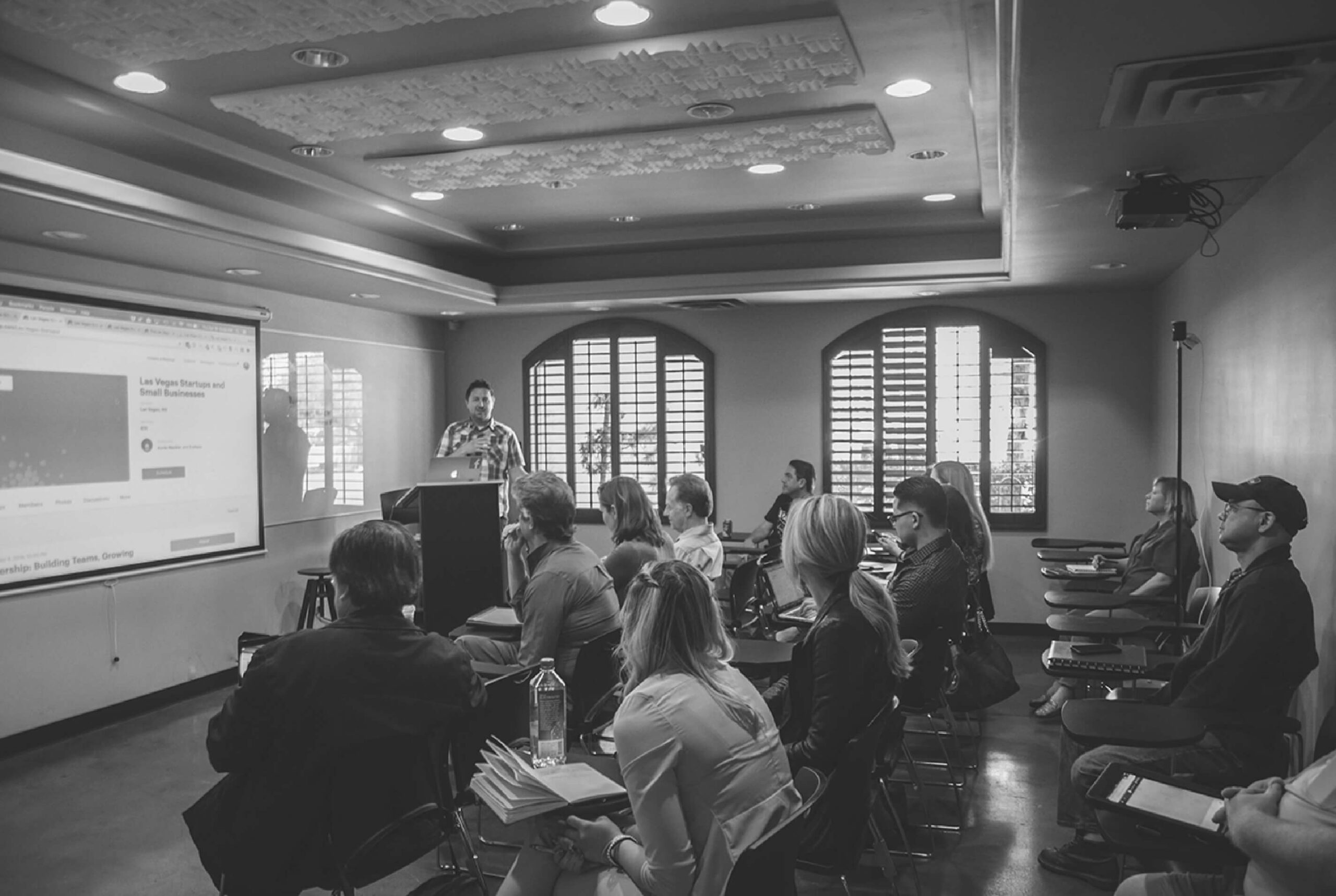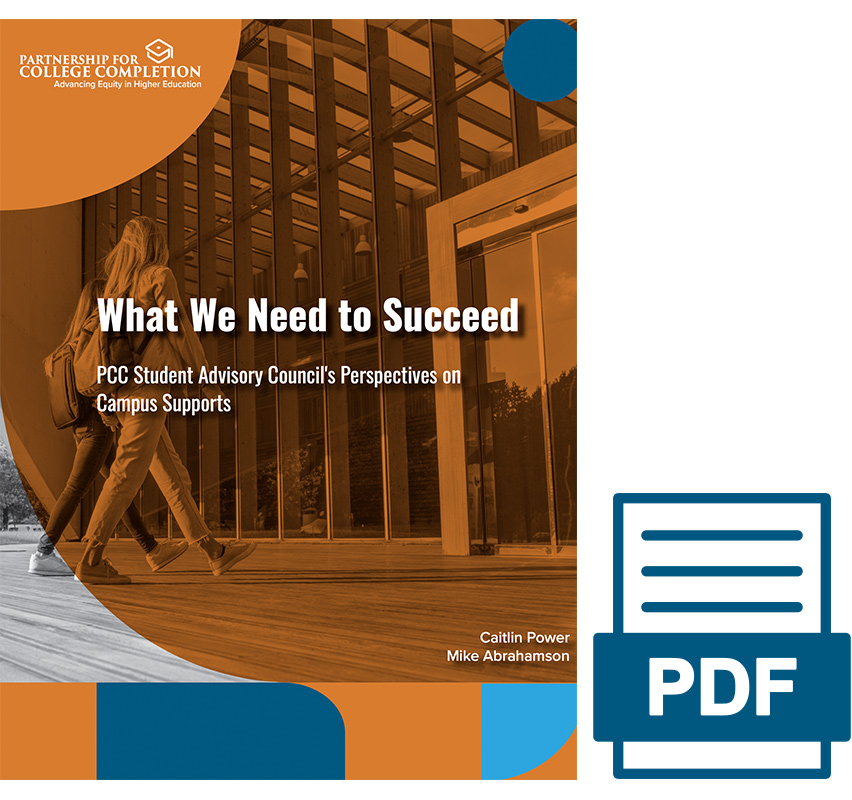Student Advisory Council 2022-23, Caitlin Power, Mike Abrahamson
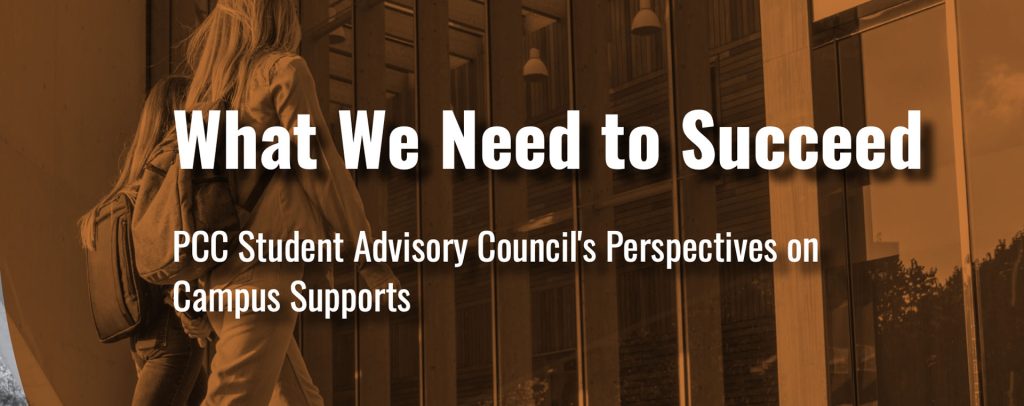
The views expressed by the student participants in this report and accompanying podcast episodes are those of the participants only. They do not reflect the opinions or views of the Partnership for College Completion (PCC), our Board of Directors, partners, or funders.
Letter from the Executive Director and Board Chair
The Partnership for College Completion (PCC) advocates for students from low-income families, Black, Latinx, and first-generation college students across Illinois. Hearing their stories and perspectives is invaluable to the work we do in both policy and practice. Recent Supreme Court rulings on affirmative action and student debt relief will have serious implications for the students we serve. Too often, students are excluded from decisions that directly impact their lives. We took on this project with the hope of uplifting student stories to ensure their voices are heard in our policy and advocacy work.
At PCC, we firmly believe that higher education policy and practice should not only be student-centered, it should be student-driven. Their voices should guide how we set priorities, identify solutions, and use funding. The student conversations in this report and the accompanying podcast were led by members of the PCC 2022-23 Student Advisory Council. They draw our attention to challenges students face on their campuses and call on decision-makers to include students in the policy-making process. This report seeks to uplift some of the stories, experiences, challenges, and solutions that the PCC Student Advisory Council surfaced in their interviews and provide initial recommendations for campus and state leaders. We also reflect on changes our organization and other advocates must make to put student voices at the center of our work.
This project was made possible by funding from Crown Family Philanthropies. We thank Crown for their support of PCC’s work across all of our priority areas. We would also like to thank the members of our Student Advisory Council for so thoughtfully, generously and candidly sharing their experiences and feedback. The experiences and challenges shared in this report are critical reminders that inequities in higher education persist affecting students every day, and must be urgently addressed.

Lisa Castillo Richmond
Executive Director

Dr. Douglas E. Wood
PCC Board Chair
Introduction
The Partnership for College Completion (PCC) worked with its Student Advisory Council (SAC) to conduct student-led interviews to inform policy and practice. PCC took a participatory action approach to the Empathy Interview project, where the Research & Data team worked with students as co-investigators to design the project, identify areas of inquiry, develop interview questions, and conduct interviews with other students.1 As part of the design process, students proposed a limited series podcast based on student interviews to communicate perspectives and experiences in their own words and voices. This report accompanies the podcast and synthesizes lessons from these interviews.
Emerging Themes
Barriers to accessing support, resources, and a sense of community
- The lack of clear or accurate information about campus resources and opportunities prevents students from accessing support.
- Limited office hours and last-minute changes to meeting times make it difficult for students to get assistance, especially for those who work or commute.
- Previous negative experiences with school resources may lead students to look for support elsewhere.
Needs from advisors and mentors
- Recognize the needs, backgrounds, and goals of students in these relationships.
- Advisors and mentors with shared identities and experiences positively contribute to students’ college experiences.
- Students need more career advising and mentorship from people with recent, relevant experience in the careers that interest them.
Role of students in providing information access and support
- Peers play an important role connecting each other to resources and community, often making up for gaps in communication from institutions — especially for students of color.
- Institutions benefit from the work students of color do to fill these gaps in service. This often-unpaid labor can have serious consequences for their mental health.
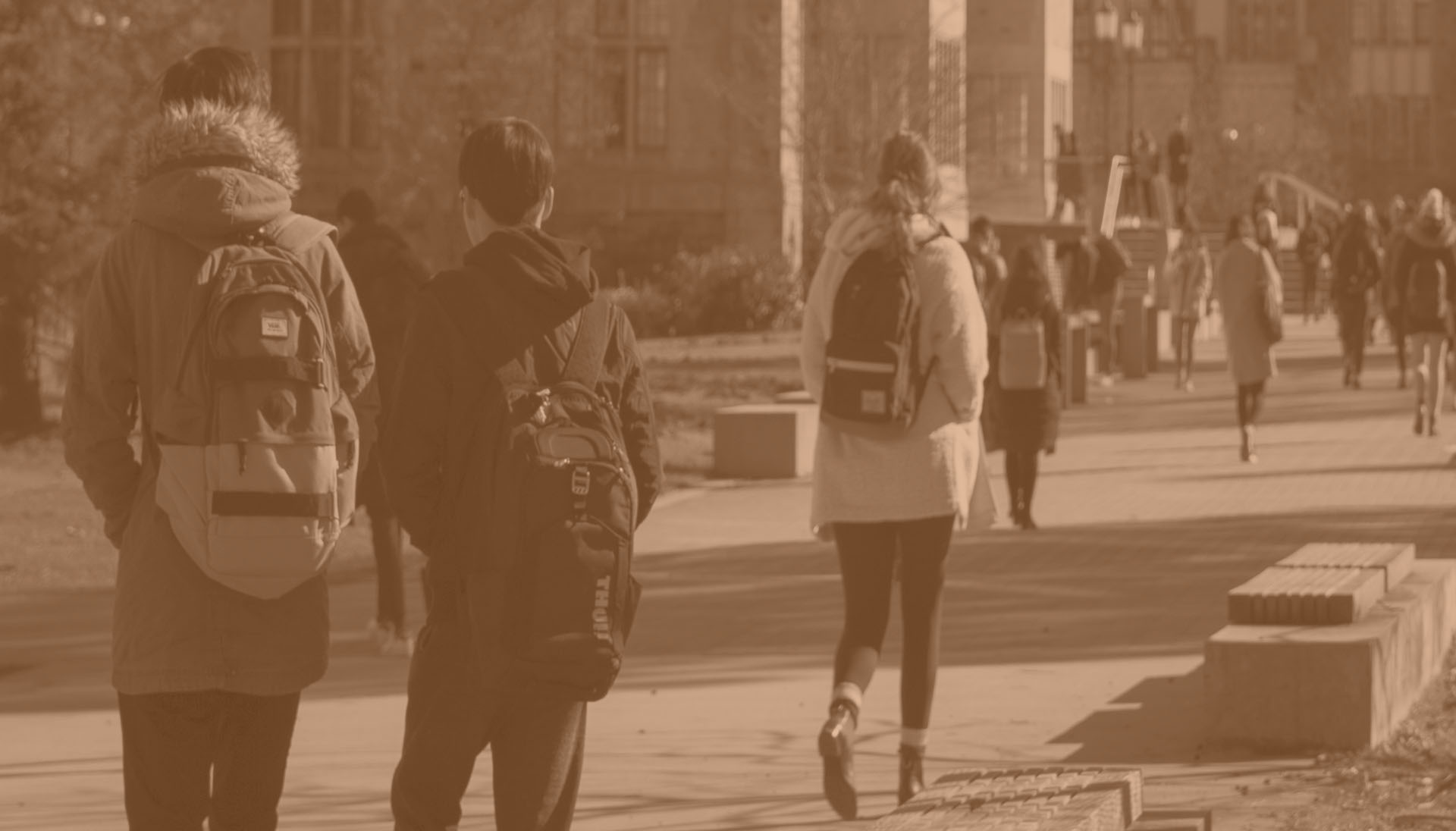
Recommendations and Approach
Recommendations
For Institutional Leaders
- Empower students as essential decision-makers on campus.
- Dismantle the organizational policies and practices that limit the resources for faculty, staff, and students of color. Invest in programs and interventions that increase the presence and well-being of people of color on campus.
- Facilitate opportunities for students to cultivate intentional community and relationships with each other and identify instances where students are doing work the institution should be responsible for.
For State Policymakers
- Distribute funding equitably so that institutions serving more students of color, first generation students, or those from low-income backgrounds have the funding they need to support students.
For PCC and Other Advocates
- Align policy priorities and legislative agenda with student needs and demands.
- Develop ongoing opportunities for student-driven projects and inquiry.
Approach
PCC had two overarching goals for this project. First, to better align PCC’s policy advocacy and research agenda with student priorities, needs, and solutions. Second, to give the Advisory Council and other students a platform to share their experiences and perspectives with key stakeholders. A participatory action framework was ideal for this because the goal was to conduct inquiry with a community rather than about a community.2 This approach challenges existing research methods that privilege the lens of external researchers over community perspectives in identifying problems and solutions.3
To accomplish this, PCC involved 14 of the Student Advisory Council (SAC) members across each project phase.4 The interview portion was completely voluntary and not everyone participated. For privacy, identifying information was changed and both interviewers and interviewees chose their own aliases. SAC members decided the direction of conversations, developed materials and guides, identified deliverables, and both participated in and conducted interviews. They also offered feedback on emerging themes and, later, drafts of the podcast and report.
The views expressed here and in the podcast are the personal stories and experiences of a small group of students and are not generalizable. However, their ideas and experiences offer a snapshot of college student journeys and highlight some of the challenges and opportunities they encounter along the way. In addition to synthesizing their conversations, this report highlights the importance of student voice across institutional and state-level decision-making.

Findings
Barriers to Accessing Support, Resources, and a Sense of Community
Across these conversations, some students talked about inadequate campus resources while others described barriers to accessing services that did exist. Students’ comfort with and knowledge about resources and opportunities was related to whether they felt a sense of belonging on campus.5 Three access barriers came up in conversations with students: lack of clear and accurate information from institutions, scheduling challenges, and previous negative experiences with campus services.
Information access and clear communication from institutions was a focus in several student interviews — factors that research shows are especially important for first generation students and their families.6 Isa, a senior, talked about students not knowing about resources or opportunities on campus: “It’s always like ‘oh, I didn’t know we had that’ or ‘I didn’t know that was a thing that we had access to’ — and these are students who have been there an entire four years.”
Angel, who was finishing their sophomore year after transferring, described accessing resources as a “constant fight with yourself and with the university.” Even though Isaac, a senior, had a positive experience when he needed to access student health services, he did not remember his institution communicating with him about them. “I don’t recall it ever being publicly announced anywhere: if you need X, Y, and Z service, go here for that,” he said, adding that he only found them “by chance.”
Beyond the need for clear communication about what resources and opportunities are available and how to access them, Angel said students needed clarity on the limitations of campus services because “there’s always a catch.” For Angel, finding out later that the school only offered short-term counseling for students struggling with mental health, “kind of just feels like a blow. It almost feels like [the university] is lying to you when they’re trying to get you to join them.” Across conversations, students talked about how these limitations made it difficult to build community on campus.
For the students who did manage to access the institutional knowledge needed to take advantage of resources, support, or programs, many faced scheduling and timing barriers. A sophomore who chose the alias Thebrowngirlwiththecamera, had difficulty reaching assigned support staff and ultimately stopped trying. “I had been assigned a mentor. I reached out to them three times,” she said. “For some reason, you know, there is always some time conflict on their side. And then after that I just never attempted to reach out to them because there was always something going on and it just made it harder for me to make that connection.”
Reaching out for support can already be challenging and being turned away because of scheduling may deter students from doing so in the future. Maria, a senior, and Rosalia, a junior, both pointed to programs or support services they wanted to access but couldn’t because of timing. “They also set up student hours that you could come in and talk to them or ask questions but sometimes they are at a time that is very early,” said Rosalia.
Maria described feeling disconnected from her campus community in part due to scheduling difficulties. “I considered joining extracurriculars but since I live so far from campus and they’re always at night it just wasn’t really optimal for me to join any.” Schedule flexibility is often discussed in the context of adult learners but institutions may need to examine how their policies could be revised to offer greater flexibility for students across the board, including whether they have sufficient staffing to offer responsive scheduling.7
The way staff received students had a major impact on how comfortable they were seeking on-campus services in the future. “I’m interested in what they have to offer, but I’m not getting the same energy back,” Thebrowngirlwiththecamera said of her assigned advisors. “So, I would say that was one of the experiences I had that made me turn away from mentorship on campus and look for it outside.”
Kai, a recent graduate, described the financial aid office misapplying a scholarship to their account and how interacting with the office made them feel. “They were just blaming me for it, which was very confusing. I had to make a whole report and talk to the Dean,” Kai said. “It was a whole ordeal. Eventually they gave me back the scholarship but they didn’t apologize or do anything — they didn’t even directly communicate with me.”
When describing a phone call with her financial aid office, Isa remembered asking herself: “Are they just uninterested? Or they don’t really care about the situation? That has not been fun when you’re trying to figure out something as big as financial help.” Like Thebrowngirlwiththecamera, this led Isa to look for support on her own. “I’m just trying to do everything myself, research if I have to. I think it’s because of the bad experiences I’ve had,” she said.
Needs from Mentors and Advisors
The conversations also focused on student experiences with mentorship and advising. Interviewees said they value advisors that recognize their needs, backgrounds, and circumstances. They also said they wanted more advisors and mentors of color and more mentors with recent experience in their career field of interest.8
Several students described positive experiences where a mentor recognized and validated their needs, experiences, and goals. When Sofia, a junior, was struggling with her grades, she expected her advisor to shame her and make her feel like a failure by telling her she’d no longer be able to pursue her major: “I heard all these stories about other college counselors doing this and how common it is for counselors to be like, ‘No, drop all your plans, drop this major, drop these courses, and just do something else.’” Instead, Sophia’s counselor met her with understanding and helped her figure out a pathway to her goals. Sofia felt like her mentor believed in her which, “gave me the confidence that I needed to just keep pushing forward.”
Even though her advisor was not a person of color, Rosalia described how he validated her experiences and made her feel comfortable sharing: “When I complain about things, especially being in a predominantly white institution, he has given me a lot of validation.” Rosalia compared this support to when she tried to access other resources: “I just feel like I don’t see that care as much. I don’t see that compassion or that listening, and there’s a difference.”
SAC students also said it was important to have advisors or mentors with shared experiences and identities. Although Sofia had a strong relationship with her advisor, she felt like some of her needs and experiences were not visible to them. “I would have loved an understanding, a deep understanding, in terms of being a first-generation Latina student and all these difficulties that I have been going through at home,” she said. “Should I go back home and help my family in sustaining them?’ You know, all these issues that were going on, and [my advisor] didn’t really see them.”
Isa said working with two advisors of color felt like her support network understood her needs and goals. “I got to really have that connection. They kind of knew my entire situation about coming from [university], having financial issues, and wanting to go back.” Institutions must also consider how mentorship and advising responsibilities impact faculty and staff of color, who are often tasked with additional, unpaid work related to administrative or advising roles.9
Thebrowngirlwiththecamera also described an impactful relationship with her advisor, who is a person of color. “Just knowing that he understands what I’m going through, the struggles I’m facing. It’s real when we have conversations about being overwhelmed, self-destructive behavior, [and] challenges I face in a space where the majority of my classmates have had a different experience than I have. Knowing that he’s on my side and he understands makes going to [university] worthwhile.”
Sierra, a senior, said the support she received from Black faculty and staff was critical to her sense of belonging when in-person courses resumed during COVID. “When I came back, I realized that the staff who had my back were the Black faculty and staff,” she said. “When I came back to campus, I joined in everything that would help me embrace that and remember that and that propelled my sense of belonging from then until now.”
Finally, students valued relationships with mentors and advisors who had relevant professional experience. Isa mentioned the need for career advising across students’ time in school. “I have a lot of seniors graduating who don’t have any job prospects; They don’t really know what they’re going to do after. So, they spend these four years in college without any guidance and then they leave not having any guidance on how to get out into the real world.”
Kai said the kinds of knowledge and skills they need to feel professionally prepared and successful as a young person of color are different from those the faculty at their school offered. “I’ve kind of realized that I’m a lot more unprepared than I thought I would be because of a lot of professors just not wanting to change their old ways when it came to teaching and not wanting to adapt themselves,” they said. “I feel like a lot of the classes weren’t always updated enough and a lot of the people that came in and gave us advice were people that came from a privileged state and people that were much older.”
Sofia said the advisors in her department were able to support her academically but that there was a disconnect when it came to preparing for her career. “Oftentimes he wouldn’t know what to do because he’s like: ‘I am under the psychology department, but I’m only your advisor,’” she said. “He didn’t actually go through the steps of going through clinical opportunities, different career paths, and such.” SAC students consistently said that access to mentors and advisors with direct work experience relevant to their interests when they were available helped them feel prepared to move from school to work.
Role Students Play in Shaping Sense of Belonging on Campus
Across interviews, students referenced the essential role their peers play in accessing reliable information, campus resources, and facilitating their belonging on campus. Students often described this labor as filling institutional gaps in communication or support services, particularly for students of color — an under-examined topic in literature on student labor.10
Isaac and Sofia both talked about accessing support and resources from their peers through “word of mouth.” Maria talked about drawing confidence from other students: “Having that sense of community in my cohort has made me feel better about teaching and about becoming a teacher,” she said. “I’ve grown to be much more confident when I implement a lesson plan and I feel like a lot of that has to do with my peers cheering me on.”
Angel mentioned that relationships with other students were instrumental in connecting to campus life after feeling isolated their first semester. Thanks to a new, close friend, “I got more of a footing on campus. I got to know more of the residents. I got to join some of these cool events that I never knew existed.”
Rosalia echoed this idea, comparing her experience engaging with student organizations to other support services on campus, noting “student organizations were very good at helping [bring] people together and as well as kind of mentoring too because some have their own communities. But when it comes to those bigger campus organizations, I feel like there’s this isolation.” Reflecting further, Rosalia said: “I think students are mentors. Sometimes not every person feels comfortable with a faculty member.” Rosalia’s comments point to why students turn to their peers when their needs are not being met institutionally.
Not all SAC members had positive relationships with other students on campus, which often impacted their college experience as well. For example, Thebrowngirlwiththecamera felt isolated from other students, which made her less comfortable seeking campus support and services. “I feel like I have to be this perfect person,” she said. “I have to look the part and it’s hard trying to look a part when you don’t have the money to afford these things. It makes it harder to make friends when you’re in the lower status and these people look at you like you’re nothing.”
While Isaac described a strong network of students, staff, and faculty, they initially felt uncomfortable reaching out for support. “I go to a very rural college and there aren’t a lot of students of color around campus so I get pretty…hesitant to reach out to anyone because there’s an underlying fear of “oh, they might not help me, or I might not receive the service I need, or they might not hear me out completely.”
Sierra noted a similar trend at her institution, where many Black students were isolated from the campus community. “We saw that a lot of Black students were going from their dorms, to class, back to their dorms — that was kind of it,” Sierra said, adding that it often fell to other Black students to build community and institutional knowledge. “We as leaders found belonging in working with each other and so now knowing that the gap is still there, what events can we host? What knowledge can we spread? What can we do to bring students out of their dorms and into these spaces that, again, they’re paying for?”
Although Sierra acknowledged that her work with other Black student leaders on campus was important for building a sense of belonging, she also talked about the toll these roles can take, especially when disproportionately held by students of color.11
“Bridging that gap between student and the university, and multiple capacities and lenses is what we try to do and that is a lot of work for undergraduates who are trying to get a degree themselves,” said Sierra. “I took on [the university’s] job. Myself and other students were kind of bearing the burden of bringing the resources to students. That is the school’s goal and should be their primary focus and we were doing work we were not getting paid to do. And, you know, we as advocates and volunteers do the work willingly just so people can be left in positions that weren’t available to us, [and] we can leave campus better than how we found it — but at what cost?”
Student conversations showed the critical role students play in sharing information and support, but also highlighted how often students take on responsibilities that should be shouldered by institutions.
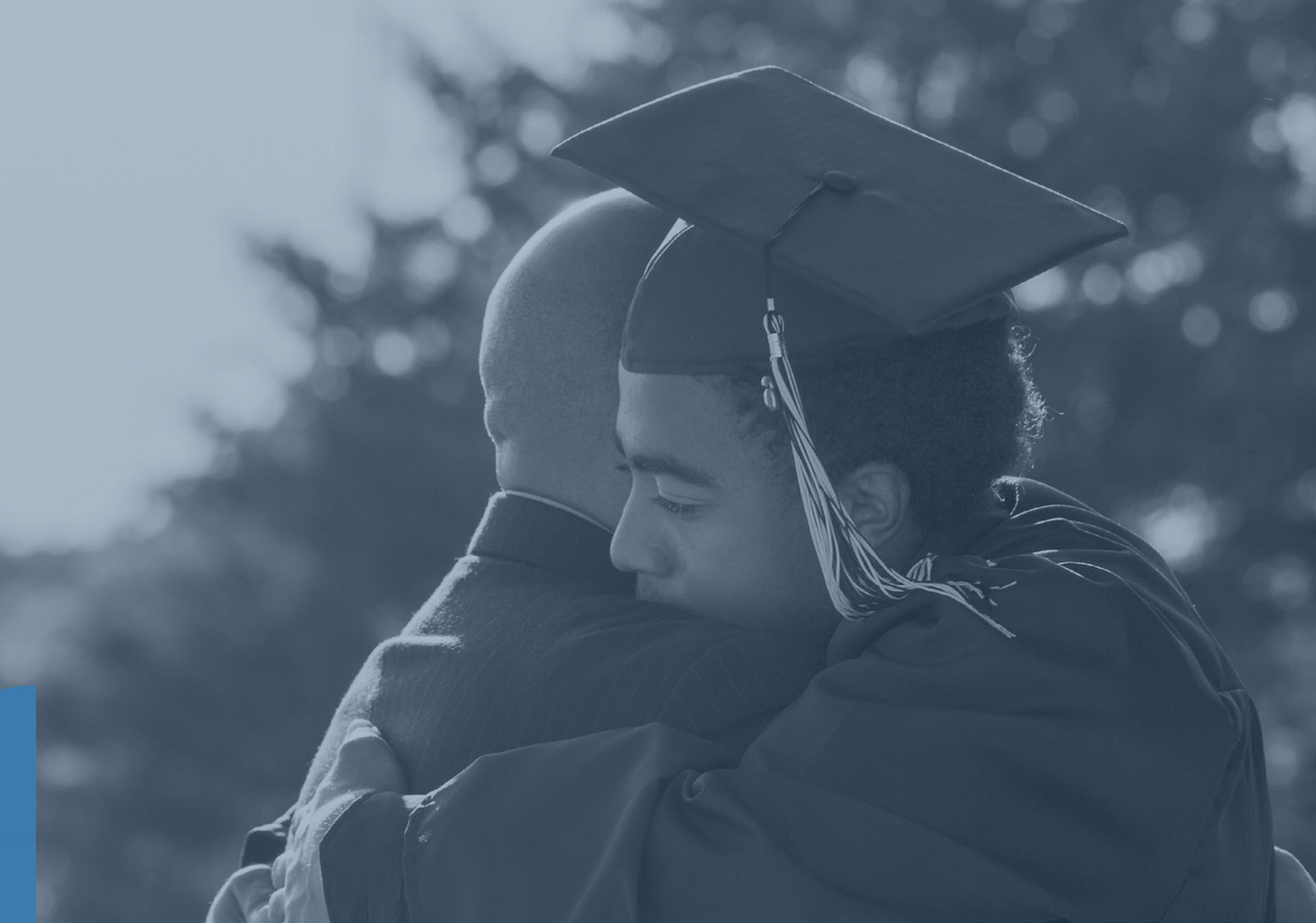
Recommendations
Below are recommendations to help address the barriers students said they experienced accessing services and staying enrolled in college. They are targeted towards institutional leaders and state policymakers who want to better understand student experiences in their own words. We also include reflections on how the lessons of this project will be incorporated into PCC’s policy and practice work.
For Institutional Leaders and Decision-makers
Empower students as essential campus decision-makers. Institutional leaders who want to better understand the needs of students must listen to them and give them control over their narrative, as demonstrated by this project.12 Students must also be able to impact policies and processes on campus to help fix the issues they identify. Some examples of this include transforming systems of governance and accountability to include a range of student voices and experiences, participatory budgeting which gives students a direct say in how campus funds are spent, and expanding the forms of engagement institutions consider when making decisions that impact students. Across their efforts to expand student voice and decision-making power, institutions should ensure that students are equitably compensated for their time.
Invest in programs and interventions that increase the presence and well-being of people of color on campus. Research shows that students and employees of color often have to fight against institutional policies to get resources and investment.13 These interviews suggest that interventions like access to faculty and staff of color, availability of flexible and culturally affirming advising, robust funding for mental health services and cultural centers, as well as financial aid would support student success. Institutions should carefully examine how they allocate resources and bring students of color into the conversation when determining budgets.
Facilitate opportunities for students to cultivate intentional community, relationships with each other, and to explore their invisible labor. Student responses show the importance of connecting with their peers to build a sense of belonging on campus. Institutions should take steps to foster those relationships, such as funding and supporting student organizations.14 Institutions must also carefully examine where student labor is making up for gaps in services or information and fund those efforts. This funding should include work to expand student voices on campus.15
For State Policymakers
Distribute funding equitably so that colleges and universities serving more students who are first-generation, of color, or from low-income backgrounds can provide necessary support services. Currently, Illinois public colleges and universities serving the most students of color and those from low-income backgrounds also receive the smallest shares of state higher education funding.16 Historically, underfunding forced those institutions to raise tuition and fees, which priced many students out, and cut costs when it comes to academics or student support. To ensure Illinois students have what they need to succeed, state policymakers must ensure that public dollars for higher education are distributed equitably, prioritizing institutions owed a debt from a long history of disinvestment.
For PCC and Other Advocates
Develop opportunities for student-driven projects and inquiry. In this interview project, students wanted to drive decisions, including selecting questions and topics and determining the ways their stories would be communicated to different audiences.17 Students also said the chance to engage and connect with other students was a valuable part of the project.
Align policy priorities and legislative agenda with student needs and demands. A student-led interview project was one way for PCC to bring the organization’s policy and practice work in closer dialogue with students. This project demonstrated that participatory action research offers nuanced insights into the barriers and challenges of PCC’s policy priorities. For example, SAC interviews suggest that conversations with stakeholders and decision-makers should consider not only policy or legislative change but also how institutions can effectively communicate those changes and their impact to students.
These conversations raise important challenges, opportunities, and questions about how college students engage with campus resources and community and what they need to thrive. PCC hopes this project sparks deep conversations and reflection at the campus, state, and organizational levels about how student perspectives shape policy decision-making.

End Notes
- Nelsestuen, Kari and Julie Smith. Empathy Interviews. (Learning Forward, 2020). https://learningforward.org/wp-content/uploads/2020/10/tool-empathy-interviews.pdf.
- Organizing Engagement. Participatory Action Research and Evaluation. (n.d.). https://organizingengagement.org/models/participatory-action-research-and-evaluation/.
- Center for Community and Civic Engagement. About Participatory Action Research. (Carleton College, n.d.). https://participatoryactionresearch.sites.carleton.edu/about-par/.
- Partnership for College Completion. Student Advisory Council. (n.d.). https://partnershipfcc.org/student-advisory-council/.
- Sense of belonging has positive implications for graduation rates. Meehan, Catherine and Kristy Howells. “In search of the feeling of ‘belonging’ in higher education: undergraduate students transition into higher education.” Journal of Further and Higher Education 43, no. 10. (Taylor & Francis, 2019). https://doi.org/10.1080/0309877X.2018.1490702.; Muraskin, Lana, John Lee, Abigail Wilner and Watson Scott Swail. Raising the Graduation Rates of Low-Income College Students. (The Pell Institute for the Study of Opportunity in Higher Education, December 2004). https://files.eric.ed.gov/fulltext/ED490856.pdf.
- Harper, Casandra E., Judy M. Kiyama, and Alice Eunjung Lee. “Communication Patterns Between Institutions and the Families of First Generation College Students: A Multiple Case Study.” Journal of First-generation Student Success 2, no. 2. (Taylor & Francis, 2022). https://doi.org/10.1080/26906015.2022.2080613.
- Barron, Paul and Constantia Anastasiadou. “Student part-time employment: Implications, challenges, and opportunities for higher education.” International Journal of Contemporary Hospitality Management. (Emerald Group, 2009). https://www.emerald.com/insight/content/doi/10.1108/09596110910935642/full/html?fullSc=1&mbSc=1.
- Ortiz-Walters, Rowena and Lucy L. Gilson. “Mentoring in academia: An examination of the experiences of proteges of color.” Journal of Vocational Behavior 67, no. 3. (ScienceDirect, December 2005). https://doi.org/10.1016/j.jvb.2004.09.004.
- Guillaume, Rene O. and Elizabeth C. Apodaca. “Early career faculty of color and promotion and tenure: the intersection of advancement in the academy and cultural taxation.” Race Ethnicity and Education 25, no. 4. (Taylor & Francis, January 2020). https://www.tandfonline.com/doi/abs/10.1080/13613324.2020.1718084?role=button&needAccess=true&journalCode=cree20.
- Linder, Chris, Stephen John Quaye, Alex C. Lange, Ricky Ericka Roberts, Marvette C. Lacy, and Wilson Kwamogi Okello. “‘A student should have the privilege of just being a student’: student activism as labor.” The Review of Higher Education 42. (Johns Hopkins University Press, 2019). https://muse.jhu.edu/pub/1/article/724910/pdf.
- Linder, Chris, Stephan John Quaye, Terah J. Stewart, Wilson K. Okello, and Ricky Ericka Roberts. “‘The whole weight of the world on my shoulders’: power, identity, and student activism.” Journal of College Student Development 60, no. 5. (Johns Hopkins University Press, September 2019). https://muse.jhu.edu/article/735230?ref=rc.
- Hall, Valerie. “A tale of two narratives: student voice – what lies before us?” Oxford Review of Education 43, no. 2. (Taylor & Francis, December 2016). https://doi.org/10.1080/03054985.2016.1264379.
- Linder et al. “Student activism as labor.”; Guillaume and Apodaca, “Early career faculty of color.”
- Maunder, Rachel E. “Students’ peer relationships and their contribution to university adjustment: the need to belong in the university community.” Journal of Further and Higher Education 42, no. 6. (Taylor & Francis, January 2016). https://doi.org/10.1080/0309877X.2017.1311996.
- Linder et al. “Power, identity, and student activism.”
- Fernandez, Frank, Xiaodan Hu, and Matt Capaldi. Exploring Equitable Public Higher Education Funding Models in Illinois: Toward adequately funding universities and supporting students. (Partnership for College Completion, 2023). https://partnershipfcc.org/wp-content/uploads/2023/05/PCC_ExploringEquitableReport_Final.pdf.
- Cook-Sather, Alison. Co-creating equitable teaching and learning: Structuring student voice into higher education. (Harvard Education Press, 2022). https://hep.gse.harvard.edu/9781682537718/co-creating-equitable-teaching-and-learning/#generate-pdf.

